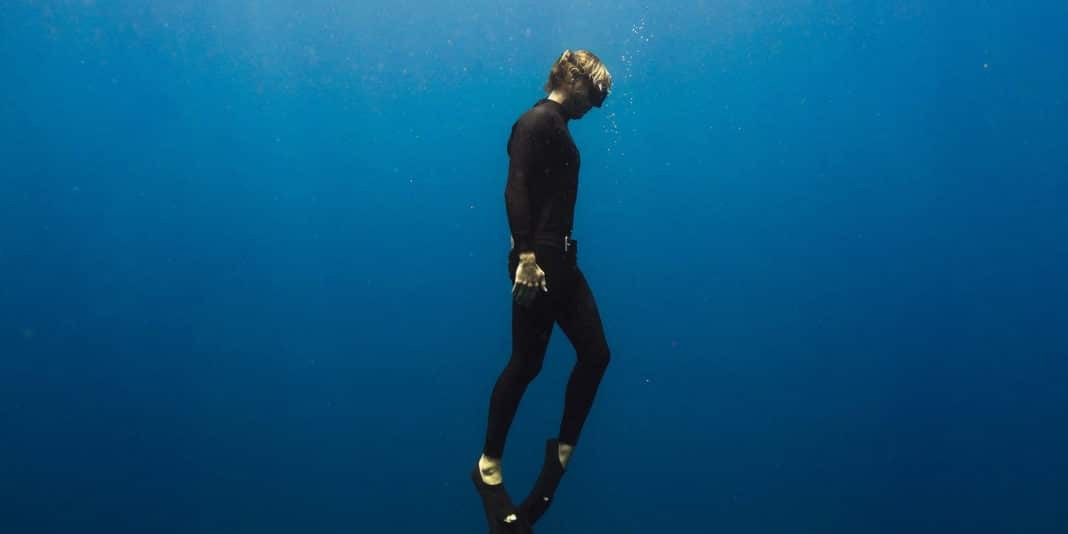In an underwater world with an increasing amount of ‘green’ options for thermal protection, how do you really know what is better for the environment?
Companies like fourth element have always strived to find the best materials and processes to create products that are better for the environment whilst maintaining their performance. For many years they have been using limestone neoprene to make wetsuits, including their new RF1 Freediving Wetsuit, and also have natural Yulex and recycled options, but what does that really mean?
Neoprene is used for thermal insulation in the water as it creates an impermeable barrier (basically, water can’t go through it). Your body stays warm by heating a thin layer of water trapped between your skin and the suit, which stays there by using effective seals and design features to minimise flushing of water. These features can include well-fitting wrist, neck and ankle seals, back up zips, zip flaps and waterproof seams.
Neoprene is a foamed synthetic rubber compound, called polymer polychloroprene. Carbon black (see below) is mixed with neoprene chips (see below) and other key ingredients to create raw sheets. These are exposed to high pressure and heat to create ‘foamed rubber buns’ which are then sliced to thickness and laminated. In fourth element wetsuits, off-cuts are recycled and reused during the manufacturing process, minimising waste.
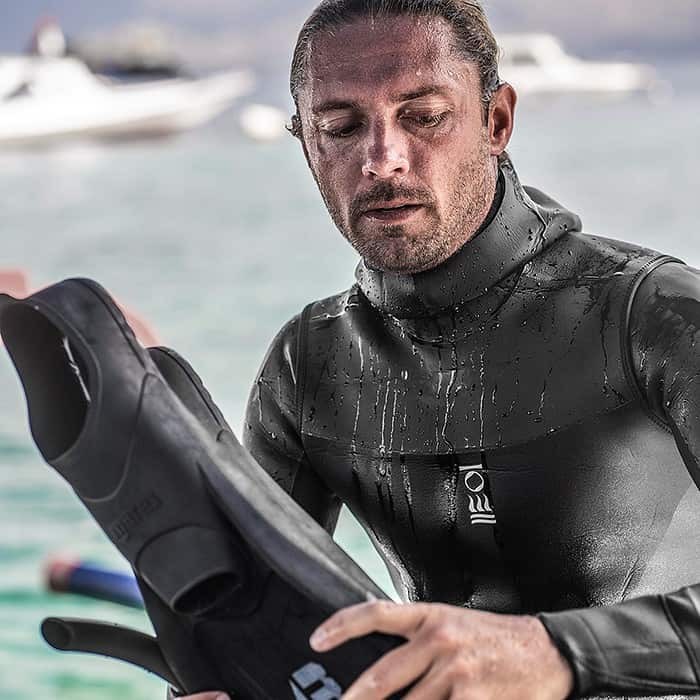
Clear Terms
Let’s look at the different types of materials and processes that can be integrated into the production of wetsuits…
Neoprene chips in traditional neoprene
Chloroprene, the principal constituent of traditional neoprene is derived from petroleum. Petroleum extraction has a larger environmental impact as well as dangers from oil spills.
Neoprene chips in Limestone neoprene
The raw materials for neoprene can also be extracted from limestone. Mining limestone does still of course have an environmental impact but less energy is used than petroleum to extract and produce it. Fourth Element estimates that using limestone neoprene combined with ‘eco carbon black’, reduces CO2 emissions by 72%.
There is one more benefit to limestone neoprene, which is that the actual material produced is of higher quality. Due to the high micro-cell structure of limestone neoprene, there are more bubbles inside the rubber. This means better insulation, better stretch, and a longer-lasting product, which ultimately means suits need to be produced at a lower rate.
Carbon Black
Carbon black is a major component of neoprene. Fourth Element wetsuits use recycled scrap rubber tyres to create ‘Eco Carbon Black’. This significantly reduces energy consumption and cuts CO2 emissions by 200g per wetsuit.
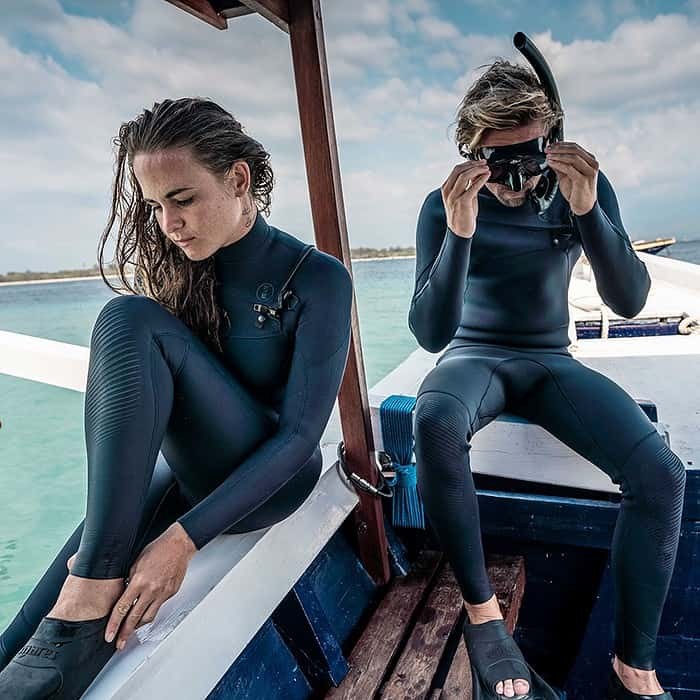
Yulex
The fourth element Surface Suit is made from Yulex Pure™, an FSC® Certified, ultra-pure natural rubber made in the USA. The plants are grown with natural irrigation systems and the materials are processed with recycled water. Even the waste plant material after the rubber extraction process is used as biomass fuel for electricity generation. Yulex™ is sustainably grown and harvested, helping protect the social and economic wellbeing of forest-dependent communities.
Alongside this, the lining fabrics are created from ocean-bound plastic bottles, recycled, and spun into soft polyester yarn. Water-based glues are used to bond the foam to the fabrics, and prints are embossed or use water-based inks to ensure every care has been taken to minimise the environmental impact of this product.
Recycled Nylon
Fourth Element’s Thermocline wetsuits aren’t made from rubber at all, that’s why they don’t affect your buoyancy. The face is made with ECONYL® recycled nylon and laminated to a fleece backing made from a combination of polyester and elastane. ECONYL® regenerates ghost fishing nets and other waste, reducing pollution in the oceans and waste in landfill. Thermocline has the equivalent warmth of 2mm neoprene.
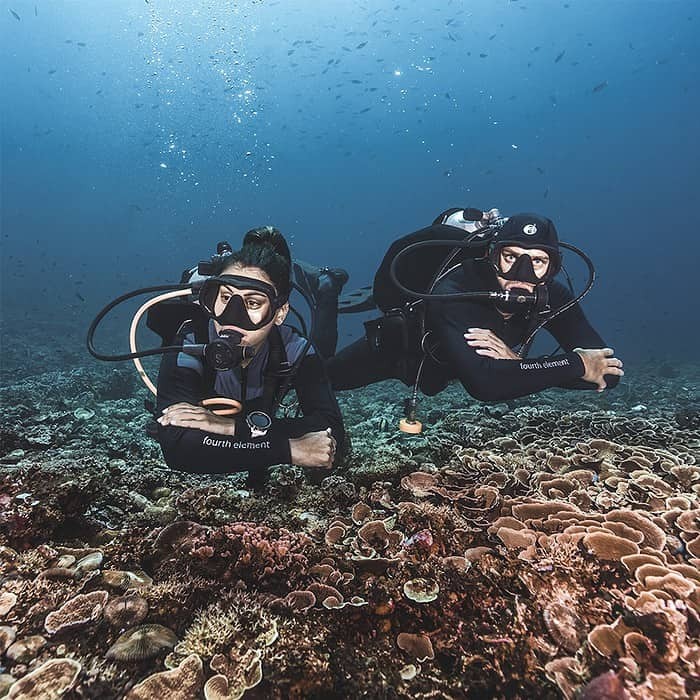
Recycled Linings
Currently, the Surface Suit has linings made from recycled polyester from plastic bottles whilst fourth element’s other wetsuits use virgin polyester. They are working with their supplier to move towards all linings being developed with recycled yarns.
Dope dyed Yarn
Some of fourth element’s neoprene garments contain yarn that is dope dyed, including the new RF1 freediving suit and 5/3mm Hooded Vests. This is a process of infusing dye pigments into a molten plastic solution to produce coloured yarns. This saves vast amounts of water whilst reducing energy consumption and water pollution.
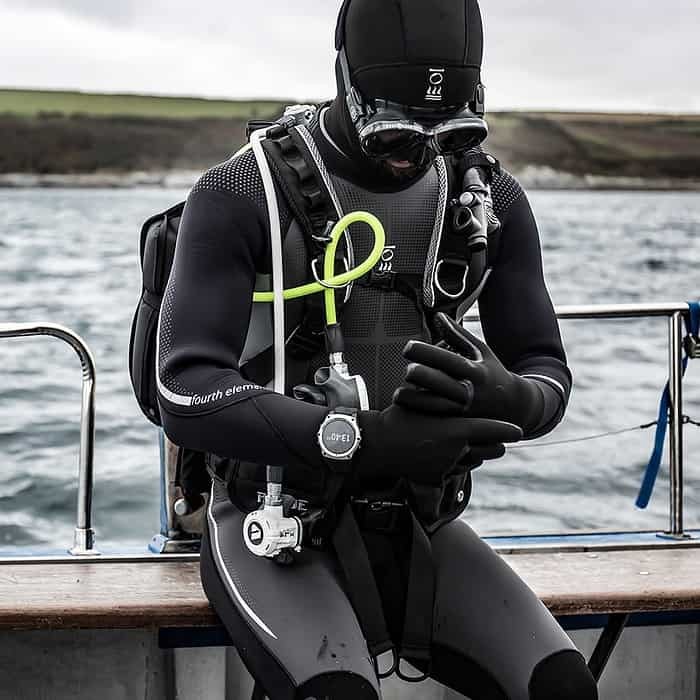
Why don’t we just use Yulex for all our suits?
Whilst it’s pretty obvious that materials like Yulex provide a much more sustainable option, and it is seen as the future of fourth element’s products, it isn’t quite as simple as just changing all suits to use this rubber overnight. One of the main obstacles is price; Yulex is comparably much more expensive to manufacture than limestone neoprene. In order to have a range of products that is accessible to everyone who wants to be a diver, currently there still needs to be regular neoprene in the offering.
Reduction And Endurance
It’s worth adding that this isn’t necessarily just a question about the product itself, but consumerism. The more we buy, the more demand is created, the more manufacturing rises. Manufacturing to some degree will nearly always have a negative environmental impact.
Quite simply, buy less wetsuits. This might sound strange coming from a company selling neoprene products but a suit that is well made, and well cared for, should last for many years, you shouldn’t have to be replacing a suit every year. There will of course be exceptions to this such as instructors who dive on a daily basis, especially those who deep dive, compressing their suit quicker than those who dive shallower but that is where we would suggest investing in a drysuit.
Look for good construction in the form of seams that have been blindstitched and glued and have taping inside on pressure points. Suits that have texture in the form of abrasion resistant materials or abrasion printing to the outside of the neoprene on critical panels. This will not only extend the life of the suit but also increase sport safety. Preventing unnecessary damage from rub from equipment or the ocean floor.
It’s good to be well informed when you do come to purchasing a new wetsuit and we hope this article helps to guide you towards making more positive choices for yourself and the environment.
Discover the new RF1 Freedive suit from fourth element
This is a sponsored post – for more information please see our disclosure policy.

